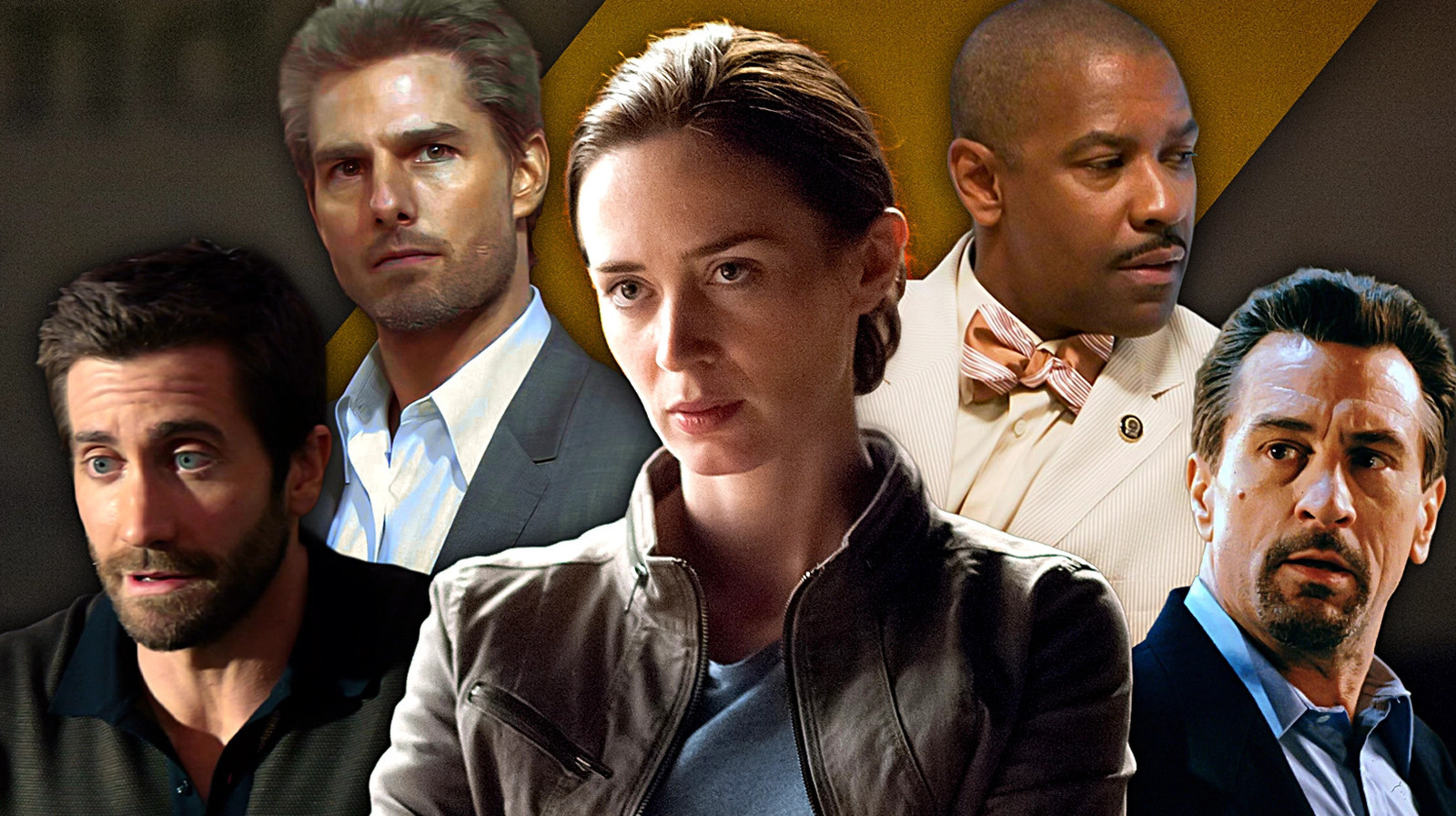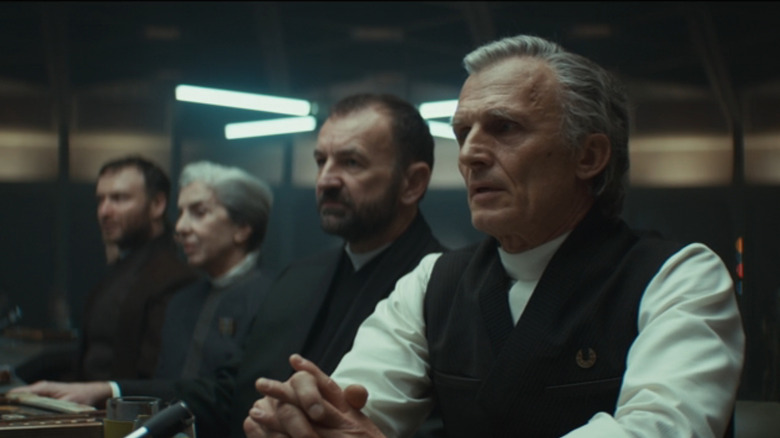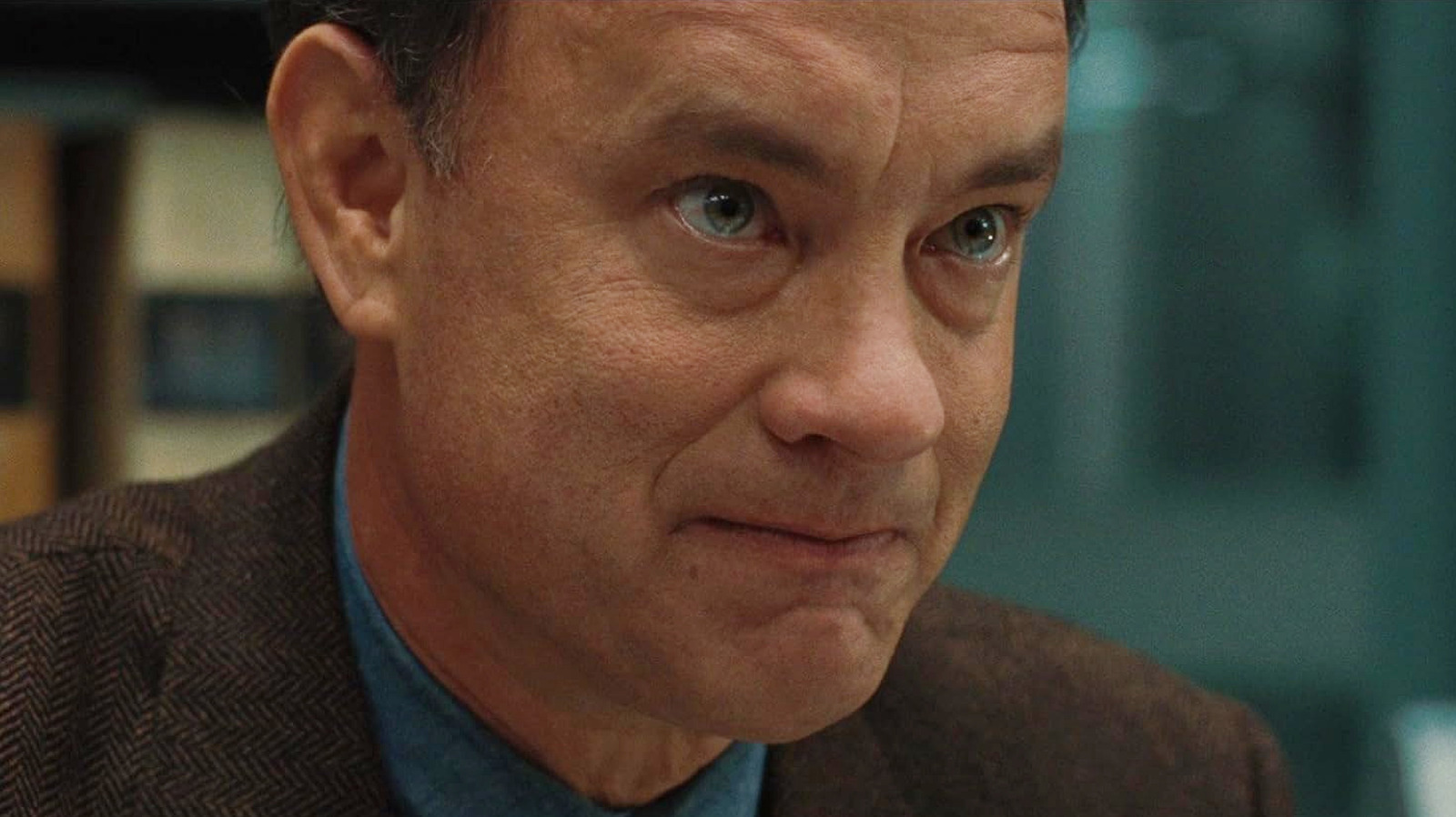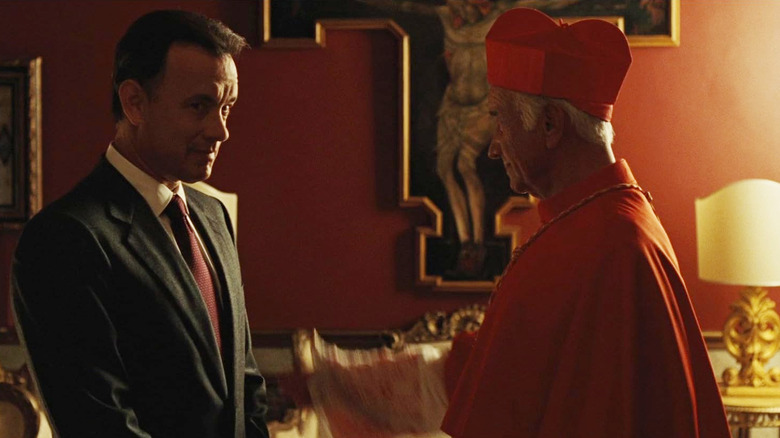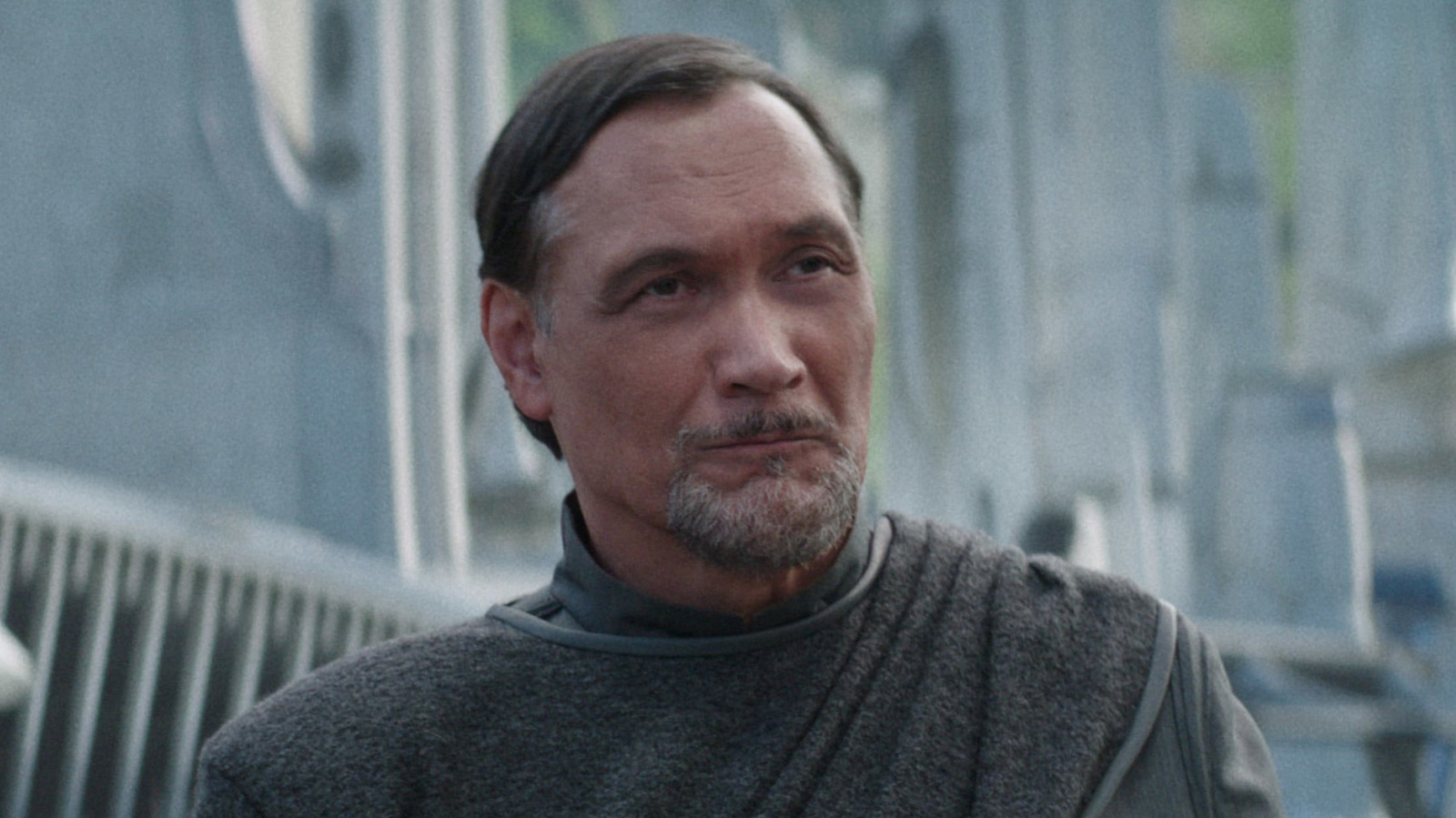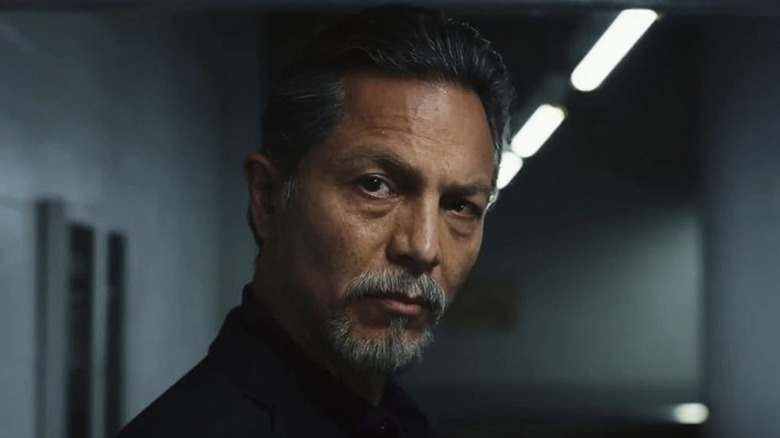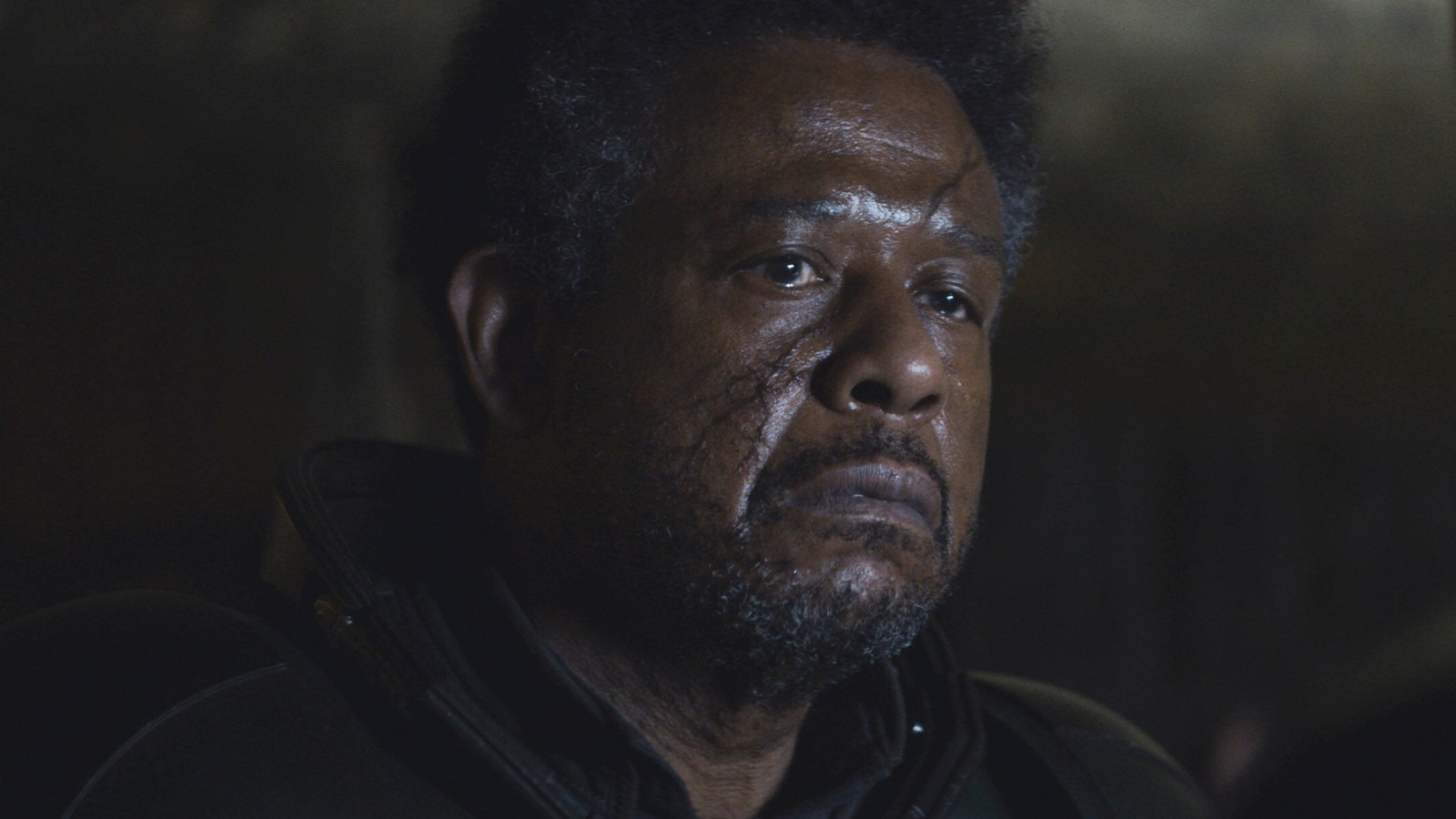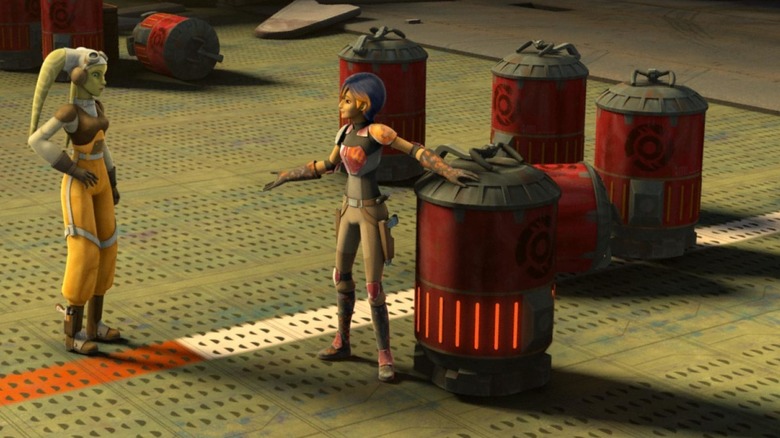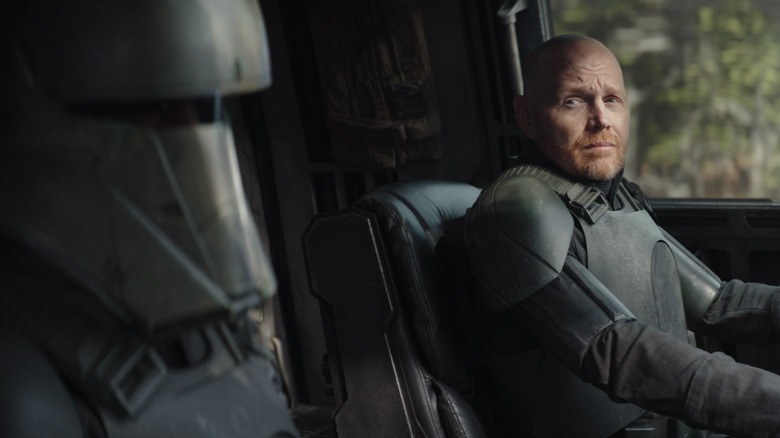The Usual Suspects
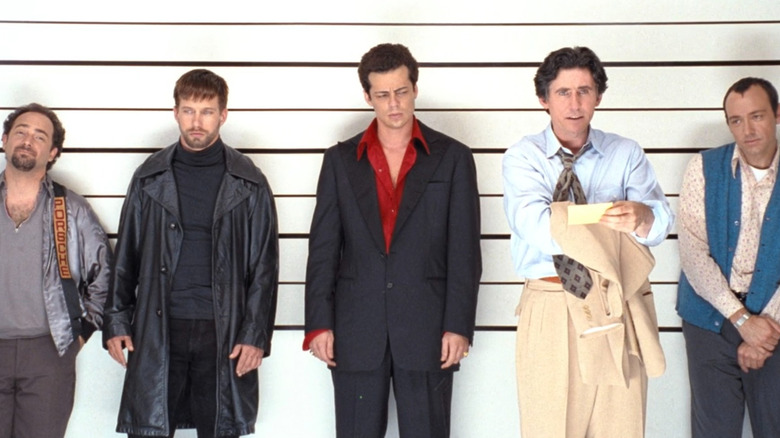
Gramercy Pictures
Surprisingly, critic Roger Ebert thought “The Usual Suspects” was a poor, incomprehensible film, but for most everyone else, it remains a pinnacle of the crime thriller genre. Screenwriter Christopher McQuarrie even won the Oscar for Best Original Screenplay for his story about a timid criminal named Verbal Kint (Kevin Spacey) who relays the story to the authorities about how him and his compatriots came to be wrapped up with the mysterious Keyser Söze.
Advertisement
“The Usual Suspects” has a twisty, labyrinthine plot, but even if you’ve never seen the movie, you’ve undoubtedly heard about how it has one of the greatest twists of all time. What makes it so good is that the twist helps make sense of everything you’ve seen previously. Whatever holes and questions you still have about the story suddenly become much clearer once the full picture’s in view. McQuarrie’s still working with twists and intricate plots thanks to writing and directing several “Mission: Impossible” films.
The Town
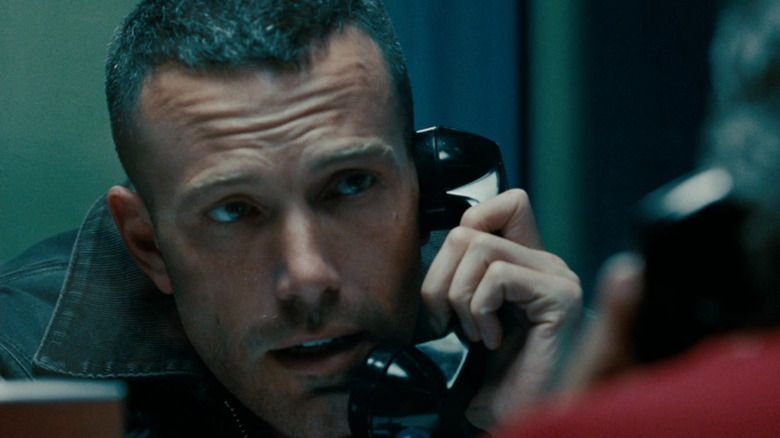
Warner Bros.
With 2007’s “Gone Baby Gone,” Ben Affleck demonstrated a ton of talent as a director, and his follow-up — 2010’s “The Town” — showed that wasn’t a fluke. Affleck directs and stars as Doug MacRay in the crime thriller about a group of bank robbers set to pull off one final heist at Fenway Park. However, things get increasingly complicated when Doug begins a romantic relationship with one of the witnesses, Claire (Rebecca Hall), from a previous job.
Advertisement
In many crime thrillers, the central perspective comes from law enforcement. The audience is meant to empathize with the cops’ struggle to track down the bad guy. But “The Town” makes a point to dig into what makes these criminals tick, and with Doug’s relationship with Claire, we get a more humanized portrayal of someone who easily could’ve just been a bank robber. “The Town” is an entertaining thriller, and after you watch it, you should check out the alternate ending to decide what you think is best for Doug.
Collateral
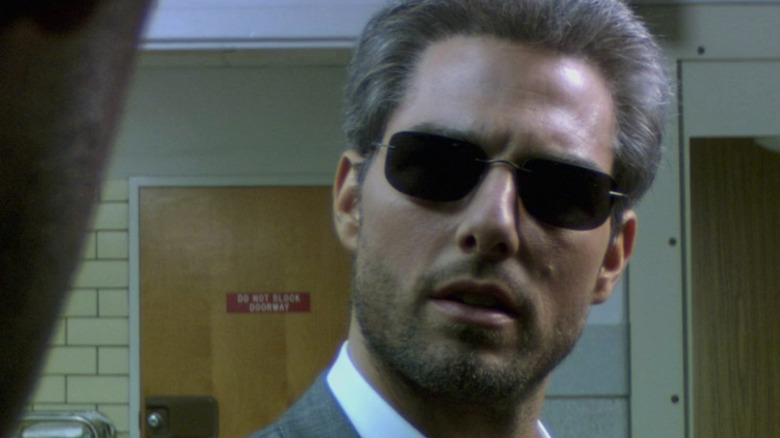
DreamWorks
Tom Cruise has largely made a career out of playing the hero. Sometimes, this is in straightforward dramas like Cruise playing Daniel Kaffee defending his fellow soldiers in “A Few Good Men,” and sometimes, it materializes in playing more of an action hero, like in the “Mission: Impossible” franchise. However, one of Cruise’s best movies ever sees him play something entirely different: an outright villain in “Collateral.”
Advertisement
Cruise plays Vincent, a contract killer who hires the services of cab driver Max (Jamie Foxx) to drive him around so that he can kill various people over the course of the evening. Even though he’s playing the bad guy in this instance, Cruise still oozes with charisma. Plus, there’s something to be said of the unique dynamic of putting an everyman in a larger-than-life scenario. Generally, these kinds of movies follow a cop or detective, but a bit part of the appeal of “Collateral” is seeing someone completely out of their depth figure out how to outsmart a hitman.
Ambulance
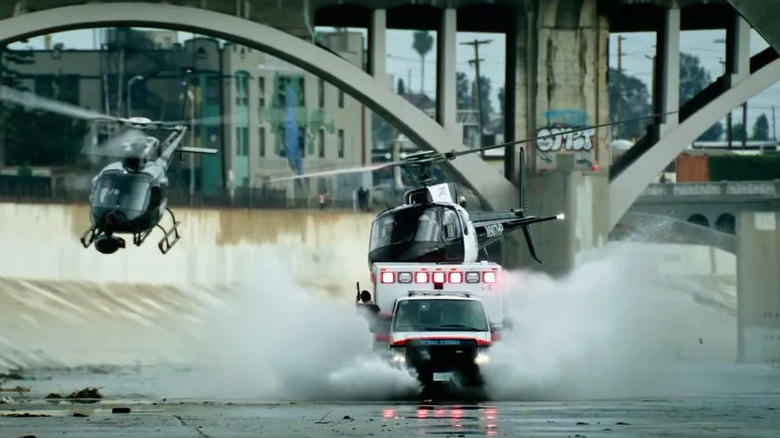
Universal Pictures
It’s weird to call “Ambulance” a small movie because it still has all of the signature mayhem (Bayhem, if you will) that’s present in other Michael Bay-directed movies. But compared to his “Transformers” films, “Ambulance” is a much smaller-scale film, telling the story of two adoptive brothers who rob a bank and then hijack an ambulance with a paramedic onboard to try to escape capture.
Advertisement
“Ambulance” was filmed during COVID-19 lockdowns, and Bay was just itching to get something done, as he was quoted by The National as saying, “I just want to get out and shoot something fast. I’m tired of being locked up at home.” The fact COVID-19 was in full force at the time meant things needed to be scaled back, which was perfect for a movie primarily taking place in a singular, claustrophobic environment, in this case an ambulance. With a budget of $40 million, it may be a long shot to call this a low-budget affair for Bay, but it proves that even when the filmmaker scales back, he can still deliver the goods.
Heat
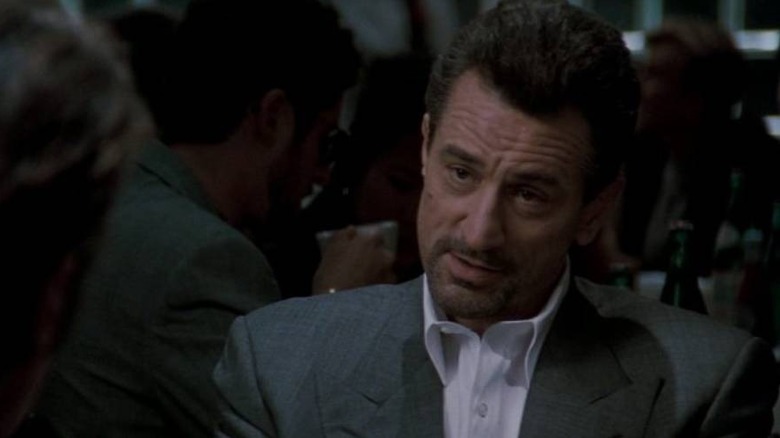
Warner Bros.
Director Michael Mann doesn’t consider “Heat” a crime movie so much as a drama piece, but that doesn’t stop the fact the film is one of the best crime pictures out there. The film follows Los Angeles detective Vincent Hanna (Al Pacino) and career thief Neil McCauley (Robert de Niro) and how their respective choices impact their lives. They’re effectively portrayed as two sides of the same coin and a lot more similar than either one would probably care to admit. But “Heat” pretty much offers one iconic scene after the next, culminating in the famous restaurant scene where Pacino and de Niro deliver a six-minute masterclass in acting.
Advertisement
“Heat” is one of the most significant films of the 1990s, and it’s pretty much inspired every crime thriller to follow it. In fact, “Den of Thieves” likely owes a massive debt to “Heat,” as it pursues similar themes of just how alike cops and robbers can be. Plus, after you watch “Heat,” you may realize just how many scenes from “Den of Thieves” are more or less copied beat-for-beat from the 1995 classic (in a good way, of course).
Hell or High Water
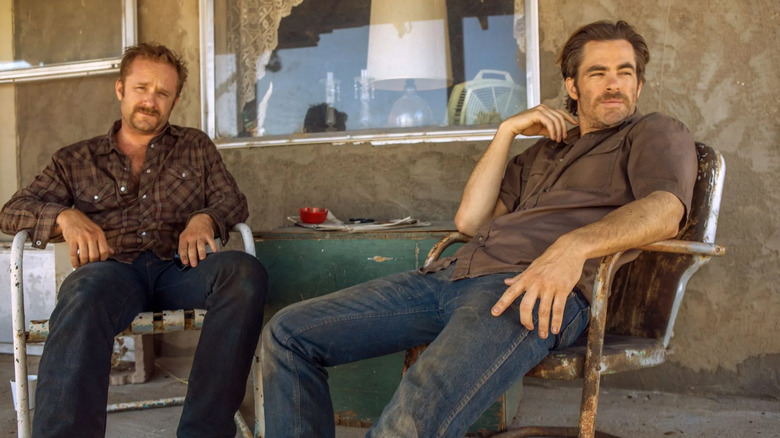
Lionsgate
Cop-and-robber movies go back almost as far as the birth of cinema itself with 1903’s “The Great Train Robbery.” These kinds of stories were prominent when Westerns ruled cinemas, meaning “Yellowstone” creator Taylor Sheridan’s “Hell or High Water” follows in a grand tradition. It offers a neat throwback vibe while still pushing the genre forward in an intriguing direction.
Advertisement
“Hell or High Water” is about two brothers, Toby (Chris Pines) and Tanner Howard (Ben Foster), who rob banks while evading capture from Texas Ranger Marcus Hamilton (Jeff Bridges). It’s a modern day story with contemporary touches, such as the fact the Howard brothers rob banks so that they can get enough money to get their ranch out of debt after it undergoes a reverse mortgage. Making the bank the pseudo-enemy of the brothers is a nice touch, making the audience like the Howards and root for them because many people can relate to feeling like the system has taken advantage of them. It’s definitely more of a slow burn compared to something with more high-octane action like “Den of Thieves,” but for those that like their heists with plenty of character development, this is for you.
Advertisement
Inside Man
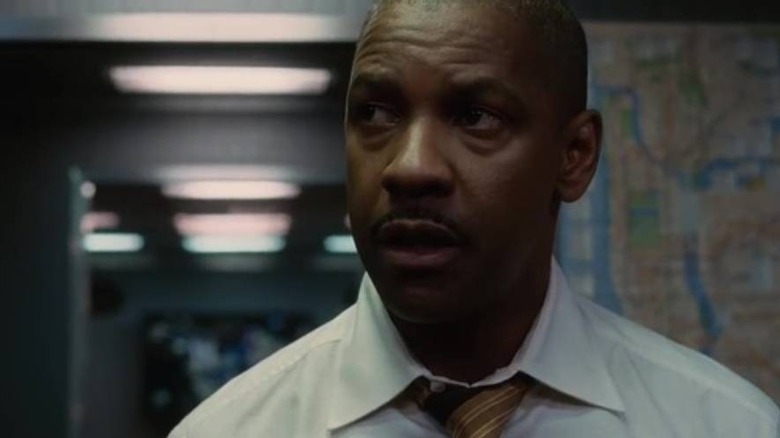
Universal Pictures
Spike Lee has one of the most eclectic filmographies out of any director working today, from biopics like “Malcolm X” to comedies like “She’s Gotta Have It.” Suffice it to say, when Lee dabbled in the action genre for “Inside Man,” it wasn’t going to be like most other action flicks coming out at the time. Lee brings his signature style and breathtaking shots to this story about hostage negotiator Keith Frazier (Denzel Washington, in one of his best roles) trying to outmaneuver criminal mastermind Dalton Russell (Clive Owen), who’s taken a bank full of people hostage.
Advertisement
“Inside Man” works so well because at the beginning, you feel like you understand where it’s going. Bank heist movies tend to be a dime a dozen, but then, the movie gradually starts twisting what’s possible within this subgenre. It all leads to an exciting climax that forces viewers to reckon with who’s really been the bad guy all along.
The Italian Job (1969)
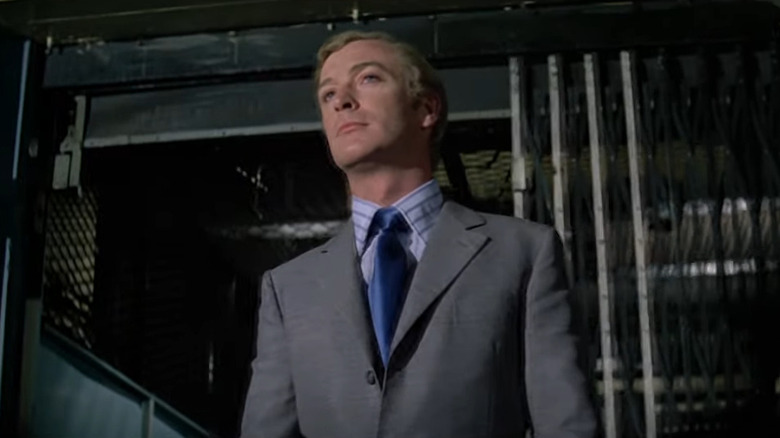
Paramount Pictures
One might think with modern advances in technology that the 21st century has the best action thrillers, but you’re doing a disservice by ignoring the 1969 gem “The Italian Job.” It may have been remade in 2003, but the original far surpasses it with its story of Charlie Croker (Michael Caine), who’s recently been released from prison and immediately sets up a gang to pull off a heist to take gold bullion inside a security truck for themselves.
Advertisement
The film has plenty of 1960s charm going for it, from the nostalgic London and Italy set pieces to the soundtrack composed by Quincy Jones. But the main attraction in “The Italian Job” is the third act car chase, which is handily one of the best car chases in cinematic history. The gang uses a set of Mini Coopers to evade law enforcement, basically taking them through joy rides as they go through buildings and a mall to make out with their stash. “The Italian Job” may be from another era, but it doesn’t feel dated. It’s still a thoroughly good time and makes for a grand showcase of Caine’s suave demeanor.
Wrath of Man
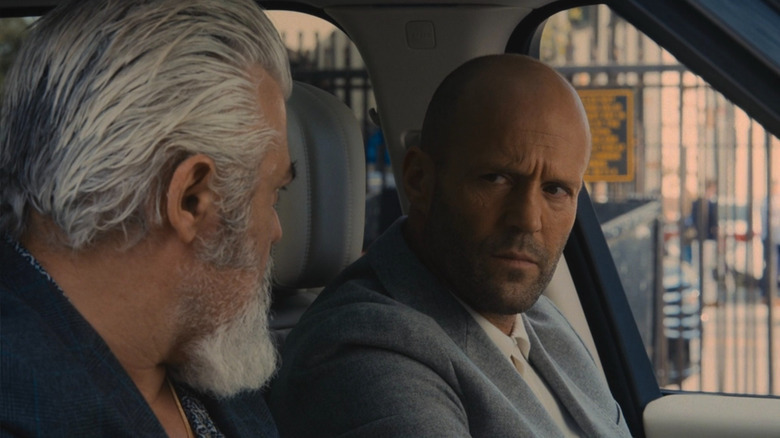
United Artists Releasing
Some director/actor partnerships can be incredibly fruitful, like Martin Scorsese and Robert de Niro or Ryan Coogler and Michael B. Jordan. Guy Ritchie and Jason Statham certainly belong in that category, as the pair have delivered some incredibly entertaining heist, from “Lock, Stock and Two Smoking Barrels” to the criminally underrated “Wrath of Man.”
Advertisement
“Wrath of Man” definitely isn’t your average heist film, as it sees Statham play Patrick “H” Hill, a cash-truck driver whose past begins getting analyzed after he prevents a robbery. As the story progresses, it becomes less of a standard heist movie and more a tale of revenge, but there’s still plenty of Ritchie-influenced action set pieces worthy of Statham’s talents as an action star. The fight scenes are brutal, and Statham plays his mysterious character well. There’s a tendency to project other Statham action hero archetypes onto H, and that only gives the film space to subvert those expectations once we learn more about who H really is.
Sicario
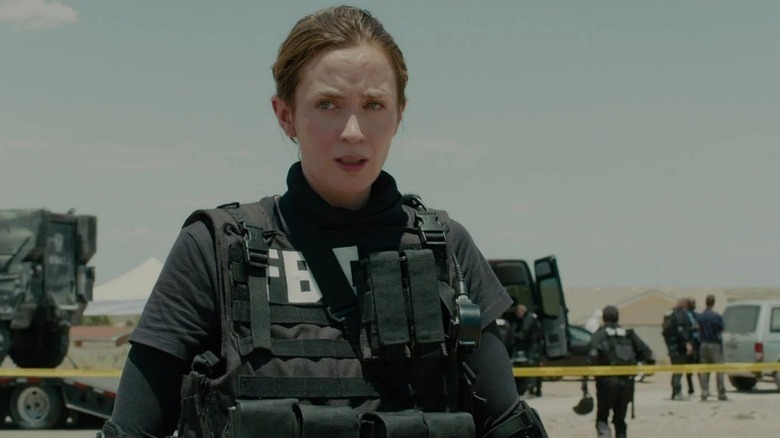
Lionsgate
When it comes to a lot of movies like “Den of Thieves,” they tend to follow straightforward crimes, often robbing a bank or pulling off some other kind of crime. “Sicario” turns its attention to the United States/Mexico border, inherently giving it a more political bent than other films within the genre. Specifically, the movie’s about FBI agent Kate Macer (Emily Blunt), who leads a task force to bring down a drug cartel.
Advertisement
It’s a darkly atmospheric film that has plenty of action but clearly has more on its mind than just delivering brutal violence. Rest assured, when violence does break out, it’s all the more impactful because the film knows when to play its hand and then pull back and focus more on characterizations. It’s also a pure feast for the eyes, as it contains some of the most beautiful shots from cinematographer Roger Deakins’ career. “Sicairo” is a film you won’t soon forget after watching it.
Baby Driver
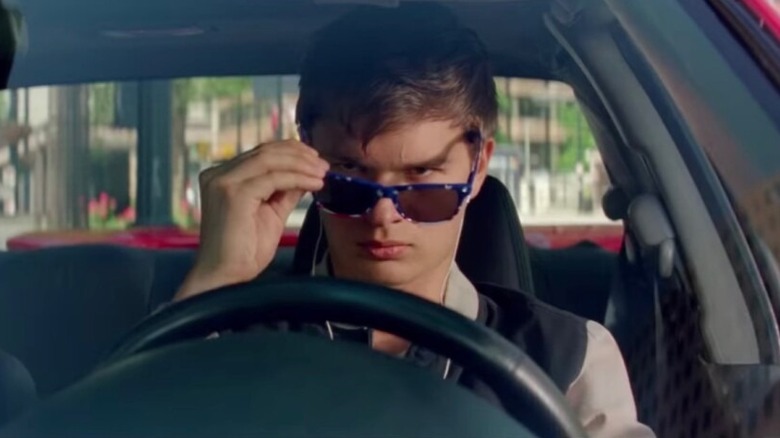
Sony Pictures Releasing
“Baby Driver” might be one of the most idiosyncratic movies like “Den of Thieves” because it’s really trying to be multiple things at once. Director Edgar Wright has cited the works of Quentin Tarantino, Martin Scorsese, and Walter Hill as influences on the heist flick. It sees the titular Baby (Ansel Elgort) as a masterful getaway driver who nonetheless wants to get out of the business so that he can focus on his one true love, Debora (Lily James). He just needs to pull off one last heist before he’s out of the game for good, but trying to do one last job is never as easy as it seems.
Advertisement
It’s impossible to talk about how enjoyable “Baby Driver” is without mentioning the soundtrack and stylish cinematography. The carefully curated playlist works in tandem with the camera shots to deliver a fully kinetic experience. Wright has largely done parodies and pastiches with “Shaun of the Dead” and “Hot Fuzz,” but “Baby Driver” sees him just trying to make a wholly entertaining heist film that still has ample comedy but also takes the workings of the genre seriously.
Law Abiding Citizen
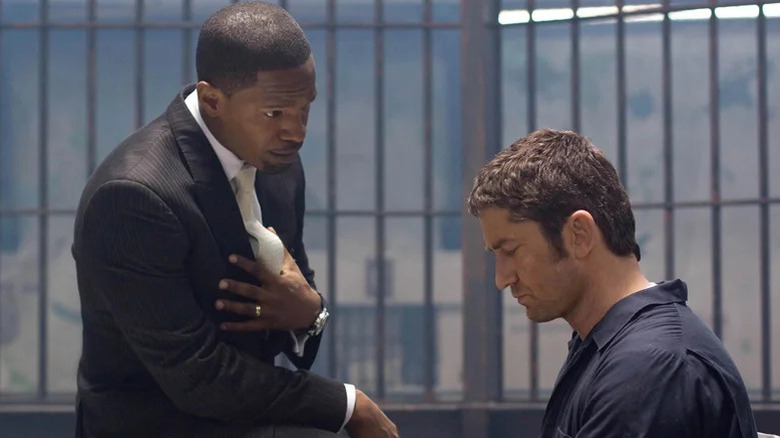
Overture Films
Gerard Butler has made a name for himself in the real of action thrillers even outside of the “Den of Thieves” franchise, like with the “Olympus Has Fallen” movies. But anyone who enjoys watching Butler kick butt would do well to give his 2009 film “Law Abiding Citizen” a shot. Unlike “Den of Thieves” where Butler plays the role of law enforcement agent, here he’s the criminal, namely Clyde Shelton who wants revenge against the justice system that failed to do right by his murdered family.
Advertisement
Like the best crime thrillers, “Law Abiding Citizen” forces viewers to consider who is really in the right. The justice system has an array of checks and balances, but not everything works out for the best for those who feel they are wronged. Is the law always the best measure to ensure that innocent people remain protected? “Law Abiding Citizen” doesn’t offer easy answers, but even if you’re not into the philosophical quandaries the film presents, there’s enough action and gripping performances from Butler and Jamie Foxx to keep you invested.
The Equalizer
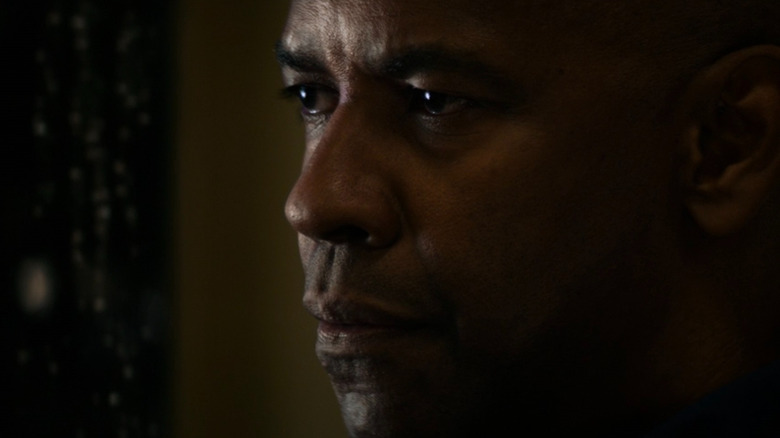
Sony Pictures Releasing
A big part of the appeal of superheroes seems to be that sometimes people need to work outside the boundaries of the law in order to implement true justice. That same ethos can apply to Robert McCall (Denzel Washington) of “The Equalizer” franchise, who has a very unique set of skills but is ultimately just trying to live a normal, simple life. That doesn’t stop him from getting wrapped up in the criminal underground upon discovering the Russian mafia trafficking a young girl.
Advertisement
McCall is a great example of a stoic hero. If he had his way, he would probably just hang out and enjoy life’s everyday pleasures. He’s not a cop who’s duty-bound by his profession to stop criminals whenever possible. He could stay out of fights if he wanted to, but he’s bound by his own personal code to ensure no one takes advantage of the oppressed. It’s a formula that works because “The Equalizer” has so far spawned two sequels with another two reportedly on the way.
Point Break
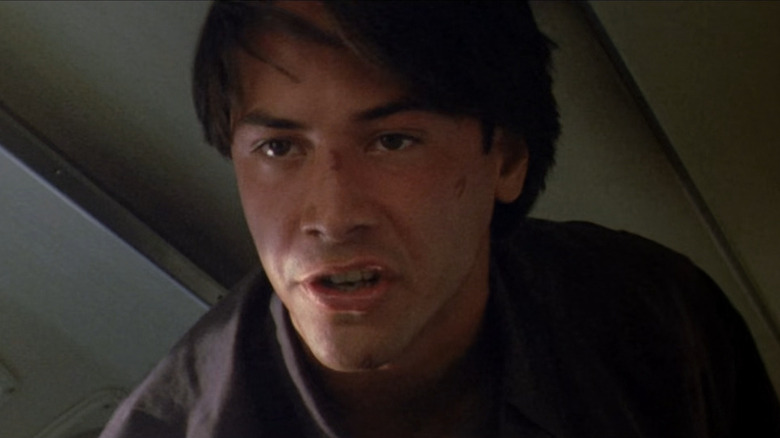
20th Century Fox
“Point Break” may mostly be known for its extremely ’90s aesthetic and expertly shot action sequences involving surfing and skydiving. But amid all of the action is a fraught crime thriller with some deep philosophical questions as FBI agent Johnny Utah (Keanu Reeves) infiltrates a criminal organization spearheaded by Bodhi (Patrick Swayze) who may be all about good times but also robs banks.
Advertisement
The increasingly complex relationship between Johnny and Bodhi sets the film apart from others of its ilk. Johnny naturally abides by the rules as an enforcer of the law, but Bodhi loses himself in life’s pleasures. Yes, he steals money, but he also recognizes the importance of staying loose and enjoying everything the world has to offer. This is something a lot of people can likely relate to, as we’d all love to do what we enjoy most but still need to find some way to make money in a world that’s only getting more expensive. Ideally, people don’t commit crimes to make ends meet, but the central conflict within Bodhi makes him an engaging character.
21 Bridges
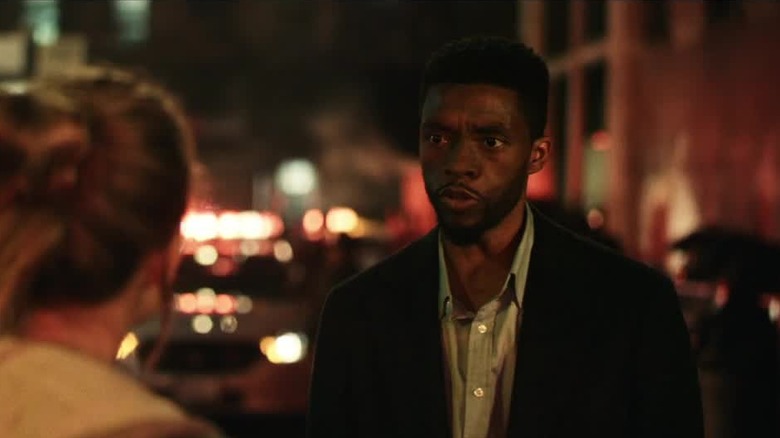
STXfilms
One of the hardest-hitting Hollywood deaths in recent memory was Chadwick Boseman dying in 2020 at the age of 43. It seemingly came out of nowhere, with the actor secretly battling cancer unbeknownst to much of the general public. The world lost a tremendous talent and decades of incredible work from the actor, but he managed to leave us with a few gems, including the underseen 2019 action flick “21 Bridges.”
Advertisement
Boseman plays Andre Davis, a New York Police Department detective who shuts down Manhattan in an attempt to trap two cop killers on the loose. The action and chase sequences are a cut above what you find elsewhere, but the movie mostly functions as a showcase of Boseman’s talents. Andre is a complicated character reckoning with his father’s legacy and trying to carve a path for himself within New York’s police force. In the same vein as other movies like “Den of Thieves,” “21 Bridges” offers a compelling storyline that tries to get to the heart of what makes someone want to bring criminals to justice while providing some neat action sequences along the way.
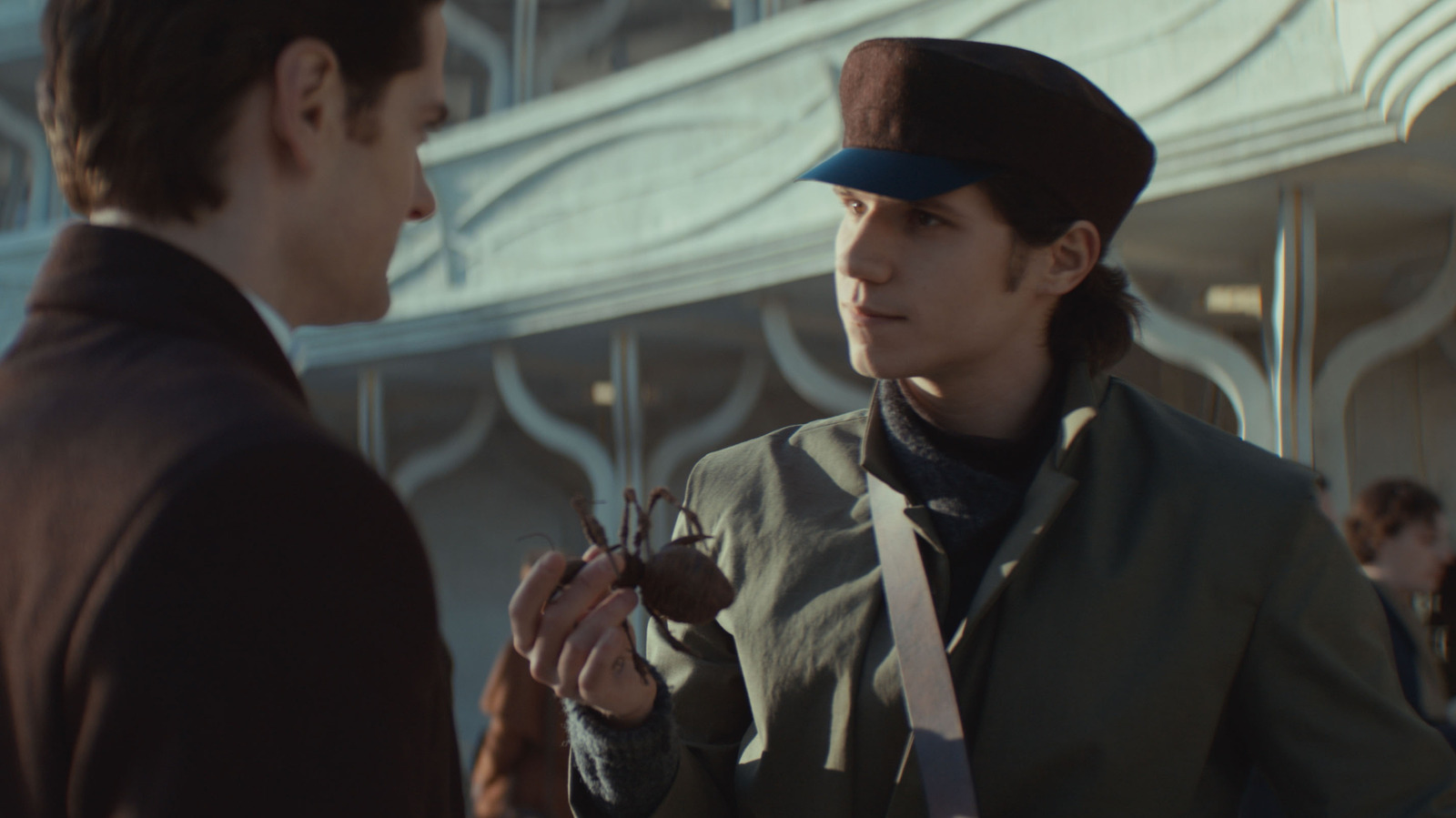
by admin | Apr 30, 2025 | TV & Beyond Articles
“Andor” was already the best “Star Wars” thing in decades when season 2 debuted, but Tony Gilroy’s timely political thriller shines the brightest while focusing on the Ghorman storyline in its latest installment. The show not only offers a poignant exploration of politics in the face of fascism, but also of the mundanity of evil and how people become radicalized. In the Ghorman subplot, however, we see the full condensed story of the rise of a larger resistance against the Empire. While we’ve previously seen rebellions like the one on Ferrix in season 1, we haven’t seen the formation of an organized revolution like the one on Ghorman — until now.
Advertisement
What makes this so tragic is that we already know the Ghorman Resistance will fail, because it is, quite literally, orchestrated by the Empire, courtesy of your favorite evil “Star Wars” power couple. It doesn’t matter how passionate the Ghormans are or how well-organized they are; they already have Syril Karn (Kyle Soller) right there with them, waiting to shut them down for good.
Part of what makes this storyline so poignant and well-executed is how real it feels. Though “Andor” is already a very grounded show that often feels like it takes place in a version of our reality (one with TIE Fighters and X-wings), the Ghorman storyline is very much the “Star Wars” version of the French Resistance. This extends from the look of the Ghorman planet (which already takes inspiration from northern Italy and France) to much of the costuming on Ghorman (which was influenced by real-life French fashion) — and, of course, the Ghorman language.
Advertisement
If you felt the speeches given during the Ghorman Resistance meeting in “Andor” season 2, episode 4 (titled “Ever Been to Ghorman?”) sounded familiar, you’re not far off. Speaking in an “Andor: Declassified” featurette on Disney+, showrunner Tony Gilroy talked about his approach to crafting Ghorman, which included hiring French actors to portray most of the planet’s residents (even if the leader of the Ghormans, Carro Rylanz, is played by German actor Richard Sammel) and being inspired by the French Resistance. As Gilroy noted, the French Resistance “is one that we’re completely sympathetic with to begin with.”
